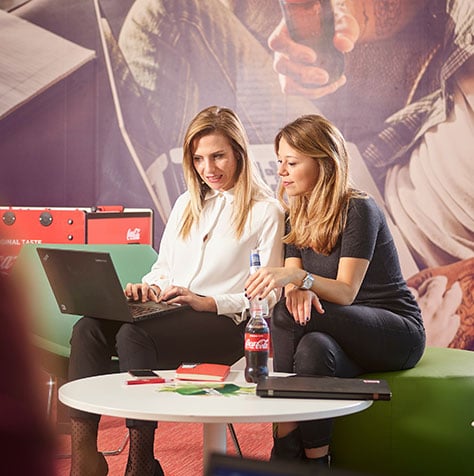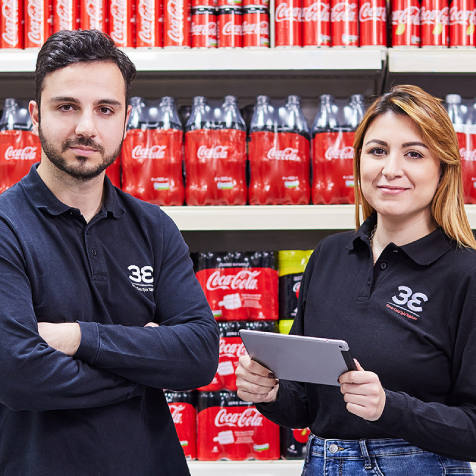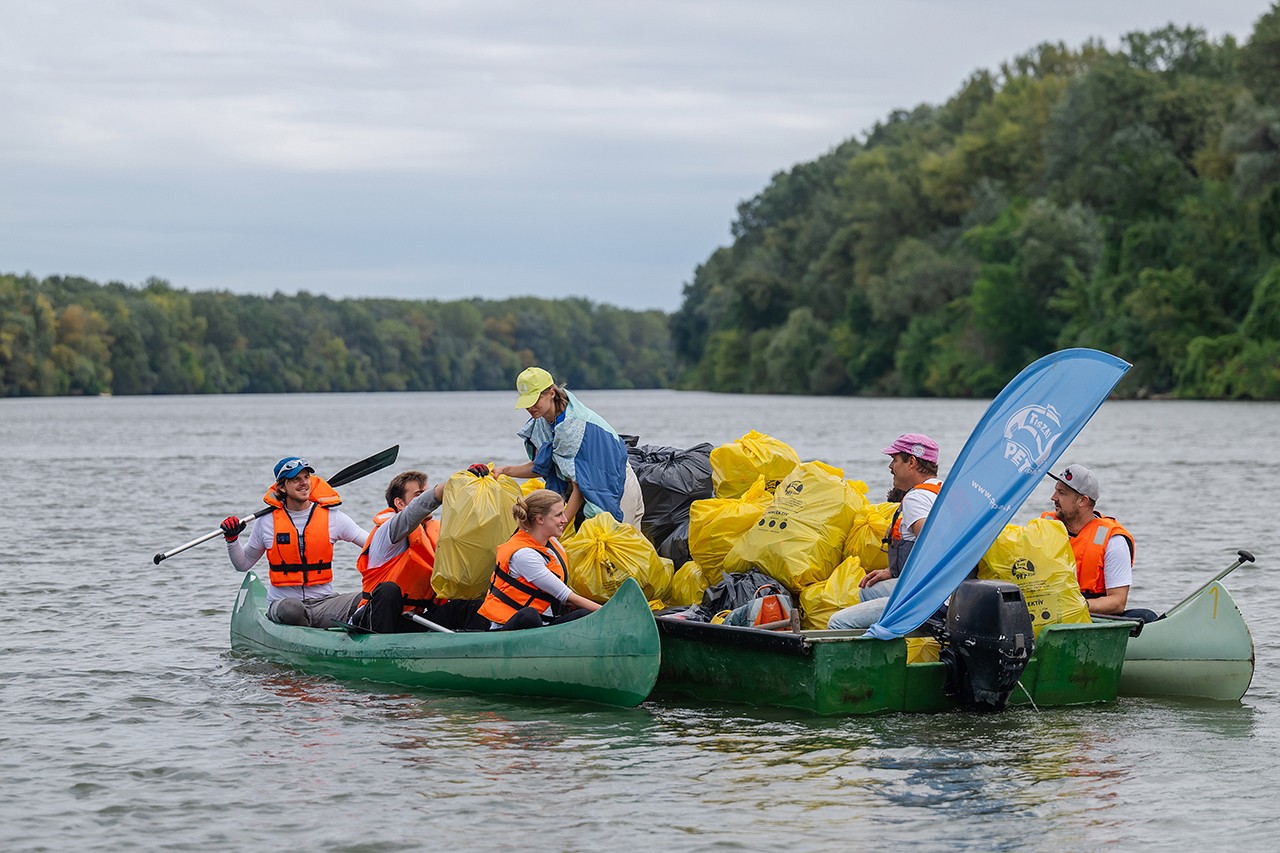Climate change is impacting our direct operations and our value chain through, for example the increased cost of energy, water and raw materials; carbon taxation; water stress; disruption in raw materials and business operations due to severe weather conditions.
Climate change – caused by greenhouse gas (GHG) emissions, emitted from every business and activity – is leading to global temperature increase and extreme weather conditions around the world. Global warming impacts environment and society across our entire value chain: from suppliers to customers and consumers. The UN’s Intergovernmental Panel on Climate Change (IPCC) has highlighted that urgent climate action is needed if we are to limit global temperature increase to 1.5°C.
We consider emissions reduction a strategic priority, committing to our ongoing investment along the value chain in energy efficiency, renewable and low carbon technologies, while working in collaboration with our suppliers and other partners. We are committed to reduce emissions to net zero across the whole of our value chain by 2040. Read more about the ultimate destination of a journey that we have already started many years ago.
We set our first carbon reduction commitments in 2006 and since then we have been playing our part in global efforts to tackle climate change. At the beginning of 2016, we were among the first twelve companies globally with approved science-based carbon reduction targets and, since then, our strategy has been in line with the 2015 Paris Climate Change Agreement and the UN Sustainable Development Goals 7 and 13 on Clean Energy and Climate Action.
Towards net zero emissions
In 2021, we committed to achieve net zero emissions across our entire value chain by 2040. This is our most ambitious, complex and forward-looking commitment. We were among the first companies to adopt science-based reduction targets by the Science Based Targets initiative (SBTi). In our net zero roadmap, our starting point is 2017, which is the baseline for our science-based targets. We have decreased our absolute direct emissions by 58% and reduced our absolute total value chain emissions in scope 1, 2 and 3 by a third from 2010 to the end of 2024, despite a global increase in emissions. These results come from our sustained investment and focus, and highlight our consistent approach to decarbonisation.
In 2024, we made important changes to our net zero roadmap after the SBTi validated and approved:
- Renewed climate targets for 2030 and NetZeroby40, including Egyptian operations for the first time.
- Targets for Forest, Land and Agriculture (FLAG) that apply to commodities from forestry, land and agricultural sectors. These are covered in our scope 3 emissions, for example, in packaging, wood and paper pulp, and ingredients such as sugar and fruit juices.
These changes are now reflected in our climate transition plan with a clear set of actions on how to achieve these targets. We will report on these from 2025:
- In scope 1 and 2 we will follow the 1.5°C pathway for 2030 and 2040.
- In scope 3, we will split our targets into two categories: energy and FLAG. Our energy related targets will follow the Well-Below-2- Degrees (WB2D) scenario until 2030 and then the 1.5°C pathway until 2040, our net zero year.
Scopes 1 and 2
In 2024, our core initiatives to reduce carbon emissions included:
- Manufacturing: we spent €26 million in 2024 on our Top 20 energy savers programme, which covers technical solutions to reduce energy consumption and improve energy efficiency. We have initiatives across our markets, for example, in Belgrade we have installed a new heat pump that captures heat from external sources and heats it up using electricity from renewable sources.
- Removing CO2 from our manufacturing processes by using sterile air or nitrogen instead of CO2 for all processes except carbonating our drinks.
Scope 3: Reducing indirect emissions from our value chain
Packaging, ingredients and coolers were our main focus in scope 3, where over 90% of our carbon emissions come from. So the work we do with suppliers is vital to our success.
- Evolving our pack mix towards lower carbon intensive packaging by increasing recycled content, expanding reuse with sustained growth in refillable packaging in our portfolio (+1pp in transactions compared with last year), leveraging packageless in relevant sub-channels and eliminating unnecessary packaging.
- Exceeded our Mission 2025 target of 50% energy-efficient coolers in shops and outlets – now at 60%. This means we reduced CO2e emissions by 100,829 tonnes compared with our 2017 baseline.
To continue on our emissions reduction journey, the decarbonisation efforts of our suppliers are critical. By the end of 2024, it was clear that our engagement with suppliers had accelerated:
- 187 of our significant suppliers disclose their emissions through CDP.
- 119 have already set, or have committed to set, science-based targets.
- These 187 suppliers buy – on average – 19% of their energy from renewable sources and generate over 3% from their own renewables.
Decarbonising our value chain
Our 2025 objective is for 50% of our manufacturing plants to use renewable or clean energy. In 2024, we achieved 53%1. This is the second year we have exceeded this Mission 2025 goal, and all our EU and Swiss manufacturing facilities continued to use 100% renewable and clean electricity sources.
Significant step forward on our green fleet
In 2024, we reduced our own fleet’s carbon footprint by 42%, a reduction of about 42,465 tonnes of CO2 compared with our baseline of 2017. Our green fleet now comprises 47% of our own light fleet. Emissions from our third party logistics providers have increased by 4.6% (equivalent to 8,002 tonnes) compared with our baseline, while our volume growth was 24.2 % over the same period.
Going greener
We’re powering our work in sales and distribution in Switzerland using electricity. With over 177 branded electric cars, our sales fleet is fully electric, and we expect 700 tonnes of CO2 emissions reduction annually. We are also investing in our infrastructure for charging stations for cars during the day and trucks overnight across our facilities.
We’ve launched partnerships with transport suppliers and the first e-trucks are on the road using locally produced electricity in Austria and Switzerland. We expect to save about 95 tonnes of CO2 emissions per e-truck in 2025. We have introduced alternative fuels, HVO and BioLNG in Italy, with the goal to expand the usage of this solution in other BUs.
Read more about our energy management programmes and energy efficiency activities.
Read more about how we manage climate change risks and opportunities here.








